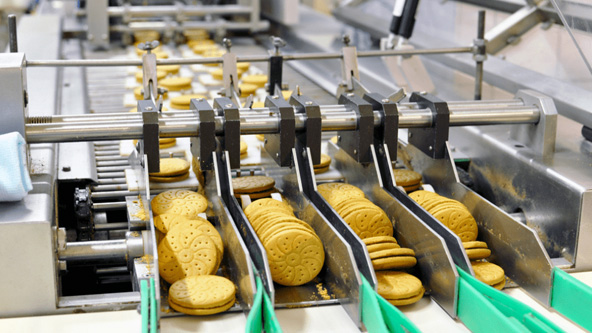
In the agricultural industry, fuel is a critical commodity. It powers machines that help farmers cultivate crops and harvest crops. Fuel also helps heat and cool farm buildings and facilitates transportation of goods to market. In recent years, modern fuel burning processing machinery has changed the food industry in profound ways. For one, it has enabled food producers to produce more food with fewer resources. This has led to a decrease in food prices, as well as an increase in food availability.
- What is a Fuel Burning Processing Machine?
- How Fuel Burning Processing Machines Change The Food Industry
- Benefits of Fuel Burning Processing Machines
- What is Fuel Burning Processing Machinery?
- How does it Work?
- Advantages of using Fuel Burning Processing Machinery in the Food Industry
- Disadvantages of using Fuel Burning Processing Machinery in the Food Industry
What is a Fuel Burning Processing Machine?
In the past, fuel burning processing machines were used mainly in food industries such as meat and dairy production. However, with the advancements in technology, these machines are now being used in a variety of other industries including chemical, textile and paper production.
The main benefit of using fuel burning processing machinery is that it is able to produce a wide range of products quickly and efficiently. This is because these machines use a variety of techniques such as high pressure and temperature to process the materials.
One of the most popular types of fuel burning processing machines is the extrusion line. Extrusion lines are used to produce various types of products such as ropes, sheets and pellets. They work by injecting a molten mixture into an extruder which then forms the product.
How Fuel Burning Processing Machines Change The Food Industry
The food industry faces many challenges. One of the most significant is maintaining a consistent quality level while meeting ever-increasing production quotas. To meet these demands, food processing machines must be able to run continuously and efficiently.
Fuel burning processing machines are one of the main ways that the food industry has been able to change in order to meet these demands. Fuel burning processing machines allow for quick and efficient production, which in turn leads to consistent quality levels.
One of the primary benefits of fuel burning processing machines is their ability to process large volumes of food quickly. This allows for companies to meet demand with minimal delay, which can lead to improved customer satisfaction ratings. Additionally, fuel burning processing machines are also effective at minimizing waste and ensuring product consistency. This helps companies save on costs and improve their bottom line overall.
Overall, fuel burning processing machines are essential in modern food production. Their fast speed and efficient operation make them a valuable tool for companies striving for consistent quality levels and minimized waste
Benefits of Fuel Burning Processing Machines
Fuel burning processing machines are revolutionizing the food industry by providing faster and more consistent results. The machines heat and chop food, making it ready for packaging or consumption. They are also used in the meat, dairy, and bakery industries.
The benefits of these machines include:
1. Reduced processing time.
2. Greater consistency in results.
3. Elimination of cross contamination.
4. Increased production efficiency.
What is Fuel Burning Processing Machinery?
Fuel burning processing machinery has been a mainstay in the food industry for many years. Fuel burning processing machines are used to process food products, making them more efficient and effective. Modern fuel burning processing machinery is changing the way the food industry does business.
One of the most common uses for fuel burning processing machinery is in meat production. Meat can be processed into different types of products, like sausage, bacon, and ham. These products are all made from muscle tissue that has been cut into small pieces. Processing meat properly requires a lot of time and energy.
Using fuel burning processing machinery can speed up the process significantly. The machines use heat and flames to break down the meat into smaller pieces. This allows for a more consistent product that is easier to store and sell.
Another popular use for fuel burning processing machines is in bakery cuisine. Bakers use these machines to make bread, pastries, and cakes. These products are often delicate and require special care when they are being made. Using fuel burning processing machines can help reduce the amount of time it takes to make these products.
The benefits of using fuel burning processing machines go beyond just speeding up the process. The machines also produce consistent products that are easy to store and sell. This is important in a market where consumers are increasingly looking for quality foods that they can trust
How does it Work?
Fuel burning processing machinery is changing the food industry. It has led to a decrease in food waste and an increase in the quality of food products. This is because it allows processors to achieve desired textures and flavors that were not possible before.
The first type of fuel burning machinery was the steam engine. It was used to power farm machinery, factories, and navigation ships. The steam engine used water as its working fluid, which made it inefficient.
In 1814, James Watt invented the first reliable steam engine. This allowed for widespread use of fuel burning machinery in the industrial world.
The second type of fuel burning machinery was the gas engine. It was used to power cars, trucks, airplanes, boats, and military vehicles. The gas engine used natural gas as its working fluid, which made it much more efficient than the steam engine.
In 1876, Nikolaus Otto developed the first gasoline motor vehicle. This made fuel burning machinery more widely available for use in the automotive world.
The third type of fuel burning machinery was the electric motor. It was used to power machines such as fans and pumps in factories and warehouses. The electric motor used electricity as its working fluid, which made it much more efficient than either the gas or steam engines.
Advantages of using Fuel Burning Processing Machinery in the Food Industry
Fuel burning processing machinery is a versatile tool that can be used in a variety of industries. It has several advantages over traditional processing methods, including:
– decreased energy consumption: fuel burning processing machines use less energy than traditional processing methods, which can lead to significant reductions in overall operating costs for businesses.
– increased production efficiency: fuel burning machines are extremely efficient and can produce large quantities of product with minimal amount of input. This results in increased production efficiency and decreased overall production costs.
– improved quality control: due to their high throughput and accuracy, fuel burning machines are ideal for ensuring consistent quality levels throughout the manufacturing process. This minimizes the risk of producing faulty products, reducing waste and cost associated with Quality Control initiatives.
Disadvantages of using Fuel Burning Processing Machinery in the Food Industry
Afraid of the costs and environmental effects of traditional fuel burning processing machinery? You’re not alone! Fuel burning processing machines have been met with opposition in recent years, as concerns over their pollution and negative environmental effects have mounted. Here are a few reasons why fuel burning processing machines may not be the best choice for your food production:
1) Pollution. Traditional fuel burning processing machines produce large amounts of air pollution. They can also release significant amounts of CO2, which contributes to climate change.
2) Negative environmental effects. Fuel burning processing machines can also have negative environmental effects on the environment. For example, they can release hazardous materials into the environment, which can contaminate water supplies or cause health problems for people who breathe them in.
3) High costs. Fuel burning processing machines can be expensive to operate and maintain, and they often require expensive fuels that are difficult to find or obtain in sufficient quantities. This means that food producers may end up spending a lot of money on these machines even if they don’t use them very often.
If you’re still considering using fuel burning processing machinery in your food production, it’s important to weigh the pros and cons carefully before making a decision. Talk to your local experts to get more information about the potential benefits and drawbacks of these machines before making a decision.
Conclusion
The food industry is constantly evolving, and that means the way fuel is burned in processing machines is changing too. Thanks to advances in technology, we’re now able to cook and store food in a variety of ways that weren’t possible just a few years ago. That’s good news for consumers, as it means more options available at more affordable prices. But it also has implications for the workers who are responsible for manufacturing and delivering these foods to our tables. As fuel-burning processing machinery becomes more efficient, it’s forcing farmers to switch from traditional crops to less-dependent crops, which could have serious consequences for global food security. In short, the food industry is changing fast – so if you want to keep up with the trends, you’ll need to be familiar with all of the latest developments.


